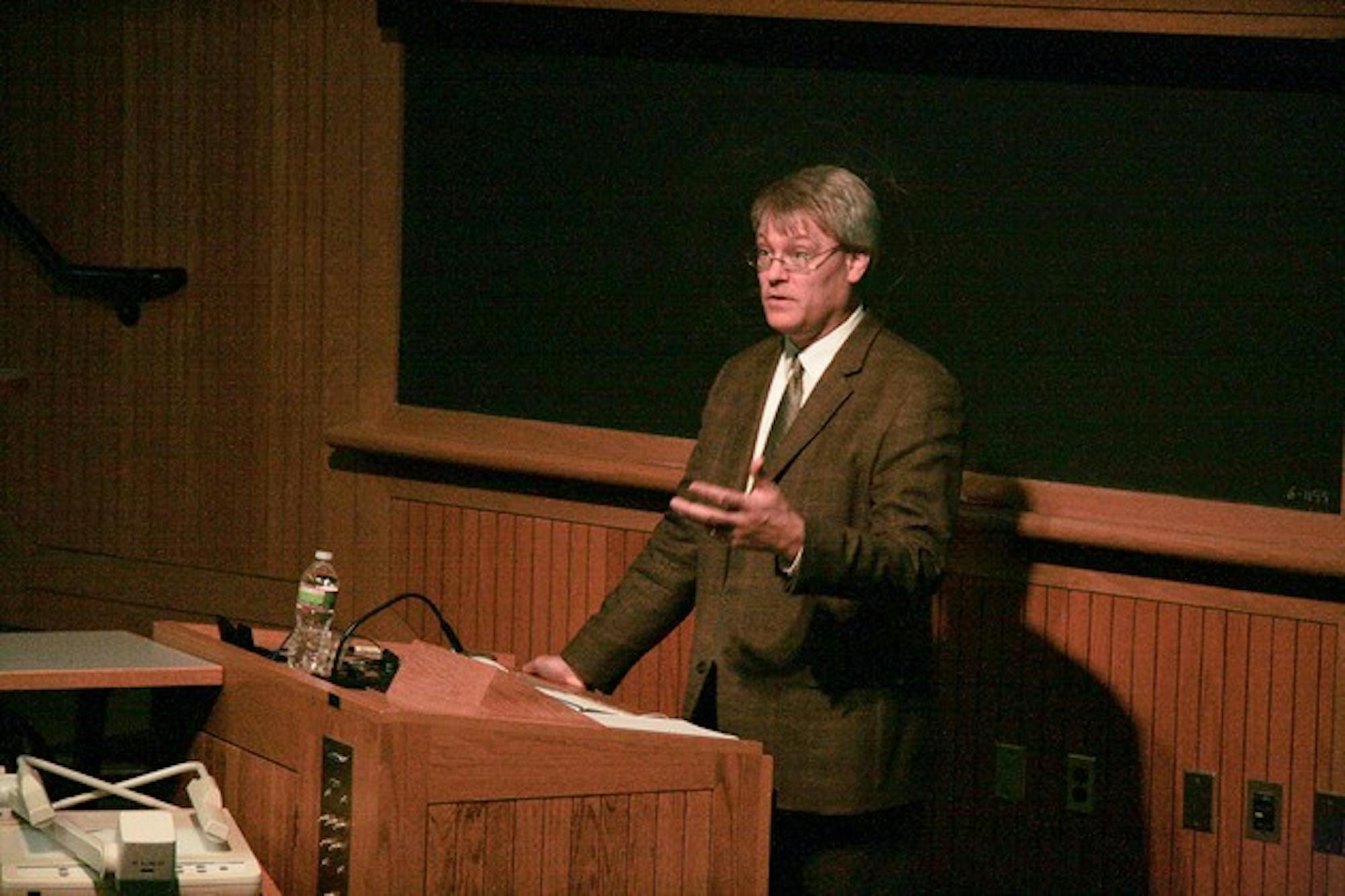Rife opened the presentation with a slide showing a steep ridge overlooking a calm, cerulean Mediterranean Sea, a historical site he is personally excavating with a team of researchers and students. Inhabitants placed monuments of the dead on this hill so that they were clearly visible to both approaching ships and the town's residents, Rife said.
"Civic space and mortuary space were situated in very close proximity," he said. "We're seeing fewer than 40 meters between tombs and houses."
The graves were built into the rock, with large facades visible above ground. The facades protected the dead from weather and pillagers while also drawing attention to the graves, Rife said.
One of the mortuary's most important purposes was to receive attention and respect, according to Rife. Residents of Kenchreai were buried with gold jewelry and engraved gemstones and were placed in mausoleums decorated with bright colors, he said. Garlands and depictions of birds adorned the walls of the tombs in symmetrical patterns, which demonstrates "a certain artistic elan," Rife said.
Each tomb was owned by an individual family and featured a central chamber that contained vaults for inhumed bodies and niches for urns containing cremated remains, Rife said.
Neither inhumation nor cremation seems to bear any correlation to the age or gender of the deceased, or with issues of overcrowding, according to Rife. Inhumation in individual vaults may have been reserved for prominent family members, while freed slaves and other dependents were cremated, Rife said. Although Rife said he has no evidence for this hypothesis except for the prominence of the full-body vaults relative to the niches, the supposition is consistent with the tombs' function of defining social strata, he said.
"This is a method of elite self-presentation," he said. "This is one of a couple ways that people can form and cement an elite identity for posterity."
The artifacts found in the tomb suggest a local identity shaped by the "vibrant pluralism" of the Roman Mediterranean, Rife said. One ring unearthed in a tomb, for example, asks protection from the Hebrew God while also depicting the Greek goddess Aphrodite and the Egyptian god Osiris.
The identity of the Kenchreai elite, however, was not wholly dependant on the Roman Empire or nearby Corinth, Rife said. Funerary tablets display both Greek and Roman names, but there are no references to connections with the Corinthian aristocracy, according to Rife.
Rife and his team of experts, professors and undergraduate and graduate students will continue to excavate the mortuary of Kenchreai to create more accurate and detailed reconstructions of the town's social structures, Rife said. The excavation team employs an interdisciplinary approach, assembling the expertise of anthropologists, botanists, geologists and specialists in human bone, he said. Rife includes undergraduates as site workers and research assistants in order to provide hands-on experience to future archeologists while generating new scholarship, he said.
Rife's ability to draw upon a wide range of disciplines to assemble data is one of his greatest strengths, according to Hakan Tell, chair of the classics department at Dartmouth.
"For these annual lectures, we are looking for scholars who can address questions in antiquity in a way that represents the full range of the Classics department here," Tell said.
Rife's presentation, "Life and Death at a Port in Roman Greece: Recent Investigations at Kenchreai," was the first Annual Zarbin Memorial Lecture. The lecture series is sponsored by Marco Zarbin '78 in memory of his father, Gino Franco Luigi Zarbin, according to the classics department website.




